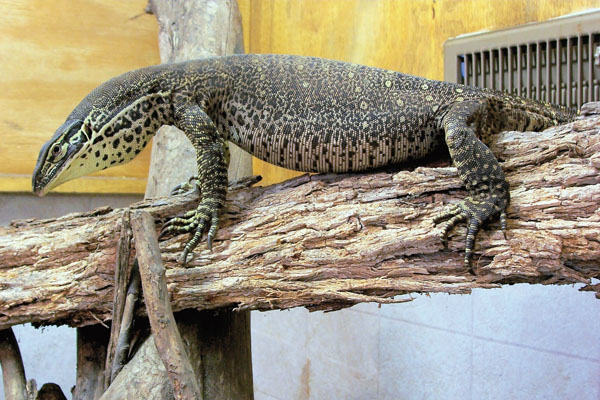

Goannas are found throughout most of Australia, except for Tasmania, and manage to persist in a variety of environments. Goanna Lizard (Varanus varius), Kangaroo Island, South Australia Unlike other species of lizards, goannas do not have the ability to regrow limbs or tails. This offers protection and incubation additionally the termites may provide a meal for the young as they hatch. Most lay eggs in a nest or burrow, but some species lay their eggs inside termite mounds. Camouflage ranges from bands and stripes to splotches, speckles and circles, and can change as the creature matures, with juveniles sometimes being brighter than adults. Many desert-dwelling species also feature yellow-red tones.

Most goannas are dark in colouration, whites, greys, browns, blacks and greens featuring prominently. Goannas have been blamed for the death of sheep by farmers, though most likely erroneously, as goannas are also eaters of carrion and are attracted to rotting meat. A goanna will prey upon any animal it can catch that is small enough to eat whole. Goannas combine predatory and scavenging behaviour. They survive on smaller prey such as insects and mice. The smallest of these, the short-tailed monitor ( Varanus brevicuda) reaches only 20 cm in length. Pygmy goannas may be smaller than a man's arm. The largest is the perentie ( Varanus giganteus), which can grow over 2m (78.7 inches) in length.Ī goanna in Toowoomba, Darling Downs, Queensland Being predatory lizards, goannas are often quite large, or at least bulky, with sharp teeth and claws.


 0 kommentar(er)
0 kommentar(er)
